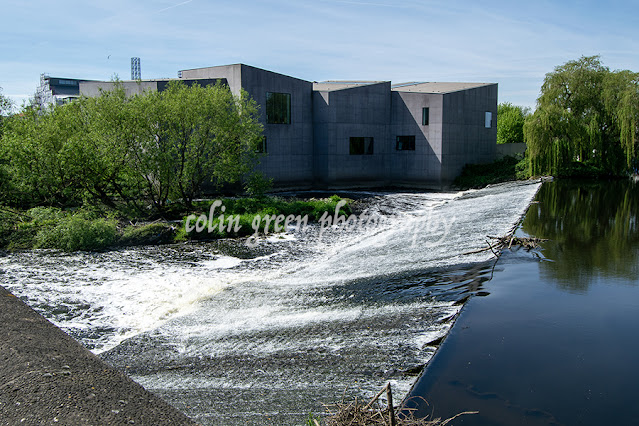Sowerby Bridge, a town steeped in industrial history, offers a unique blend of rugged Pennine landscape and a rich heritage shaped by its canals and rivers. As the sun sets and the streetlights cast a warm, golden glow, places like the Gas Works Bridge come to life, telling a story of a bygone era.
Standing on this unassuming pedestrian bridge over the River Calder, you're not just looking at a waterway; you're looking at the lifeblood of an industrial revolution. The River Calder, flowing beneath the bridge, was a key artery for trade, powering the textile mills and feeding the Calder and Hebble Navigation and the Rochdale Canal, which meet just a stone's throw away. This confluence of waterways made Sowerby Bridge a vital trans-shipment hub, connecting the industrial heartland of Yorkshire to the ports of Hull and Liverpool.
But the Gas Works Bridge has its own fascinating history, one that's closely tied to the very name it bears. Built in 1816, this bridge is a significant piece of engineering. Made of cast iron by Aydon and Elwell of Shelf Ironworks in Bradford, it's one of the earliest surviving cast-iron bridges in the Calderdale area. Originally a road bridge, it was widened in the mid-19th century with a steel overlay, and today it serves as a footpath, a quiet walkway for those looking to connect with the town's past.
The bridge's name, however, isn't just a label—it's a historical marker. It was built for Thomas Fearnside & Son of Mearclough Bottom Mill, but it’s the nearby gas works that gave it its enduring name. The former gas works site, located near the bridge, was a crucial part of the town's infrastructure, supplying power for streetlights, factories, and homes. In fact, a gas-making plant was installed in Sowerby Bridge as early as 1805, a remarkably early example of commercial gas production. Though the gas works closed in 1954, the bridge remains as a testament to this important part of Sowerby Bridge's industrial legacy.
As you stand on the bridge at night, the lights of the town and the distant beacon of Wainhouse Tower on the hill create a striking contrast against the dark sky and the reflective surface of the river. The photos capture this atmosphere perfectly—the warmth of the lamplight, the cool blue of the distant town, and the haunting silhouette of bare winter trees. It's a scene that bridges the past and present, a quiet moment of reflection in a place that once thrummed with the energy of industry and innovation. The Gas Works Bridge is more than just a crossing; it's a silent guardian of Sowerby Bridge's history, a place where you can feel the echoes of its industrious past in the calm of the night.
I took these pictures on the 29th December 2018 with a Nikon d3300, clicking any of them should open a link in another window to my Colin Green Photography store on Zazzle.
Please take a moment to share this post, follow me on social media, and explore my work on Clickasnap and Photo4Me using the links below. Your support means a lot!
All the pictures remain the copyright of Colin Green.






























































